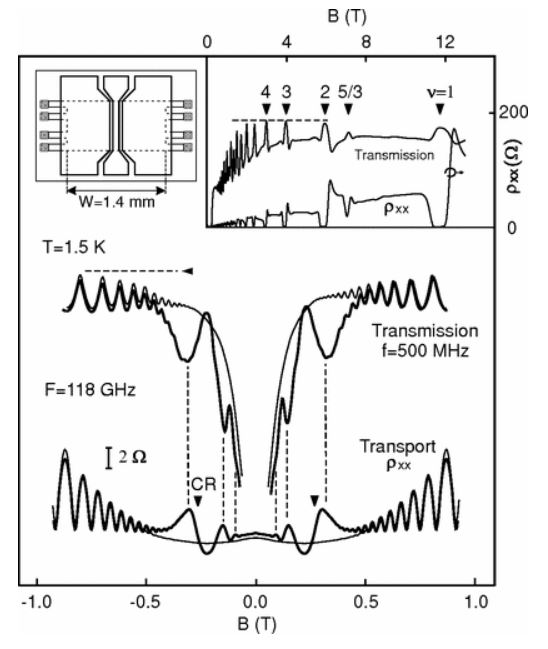I. V. Andreev, V. M. Muravev, I. V. Kukushkin, S. Schmult, and W. Dietsche. Phys. Rev. B 83, 121308 (2011).
 | In this paper, the high-frequency (f=0.05−10 GHz) magnetoresistance of a two-dimensional electron system is studied in the regime of microwave-induced resistance oscillations (MIRO). For this purpose, we employed a technique based on measuring the attenuation of a broadband coplanar transmission line placed on the sample surface, with the sample simultaneously being subjected to external microwave irradiation of frequency F=40−140 GHz. In the f⩽1 GHz probe frequency range, the coplanar waveguide transmission exhibits several features that repeat the MIRO measured on the same sample using the conventional dc transport technique. At higher probe signal frequencies f, the MIRO features in transmission are significantly suppressed. In particular, for a microwave irradiation frequency of F=80 GHz, the first two features of the waveguide transmission decrease by an order of magnitude at f1=3.0 GHz and f2=1.5 GHz, respectively. |